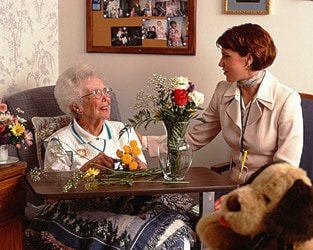The board of directors of Interior Health (IH) has approved the development of a further 243 residential care beds in communities throughout the region. Kamloops will see an additional 48 beds, with other beds added in Cranbrook, Penticton, Salmon Arm, and Williams Lake.
“The exact location will depend on the procurement process,” says Cindy Kozak-Campbell, executive director of residential services for IH. “A request for proposal will be coming out shortly.” Existing facilities could submit a proposal to provide some or all of the allotted beds in a community, or an interested party could bid to construct a new facility that would provide all the beds. It is anticipated that the new beds will be in place by summer 2018.
The additional residential care beds are a significant investment in seniors’ care, and Kozak-Campbell says that the number and location of the new beds was determined after the board looked at the demographics and demands across the region. However, she adds that the focus for IH is on building community care services that will assist people to age at home. “There will be fewer residential care spaces going forward.”
When asked about the situation in Ashcroft, she says that the board would have looked at what the current wait time is for spaces in the area, and how many people are on the waiting list for residential care. “There is not the same degree of pressure in smaller centres” as there is in larger ones, she noted. The newly announced investment is targeting communities where IH anticipates the largest population growth among seniors.
Kozak-Campbell says that as IH builds community services to allow people to stay at home longer, residential care will not be as crucial for many seniors. “We’re moving away from using acute and residential care” for a lot of seniors, she says. “The overall provincial direction is to reduce the number of residential care beds per thousand people.”
She adds that IH is anticipating legislative changes from the provincial government later this year that will allow people to stay longer in assisted living facilities. And she notes that residential care facilities are anticipating that their role will be changing, so that they will increasingly be moving to a palliative care model, and only be looking after people with highly complex medical needs, such as dementia.
The role of residential care facilities has already changed a good deal in the years since Kozak-Campbell first began working in health care. “People would be admitted who were still driving, and who would go to the golf course every day. Now they will be about caring for people in the last year of their life, and providing palliative care.
“There is a lot of work to do with the public regarding education about residential care facilities,” she adds. “They’re not a retirement home; they’re for people with complex medical needs.”
